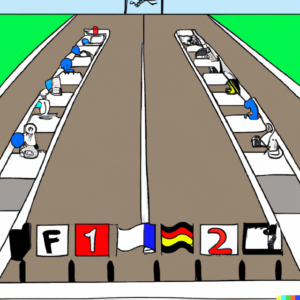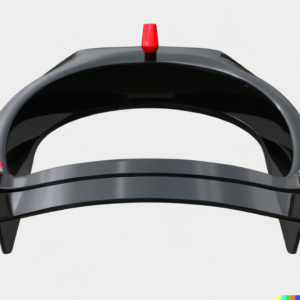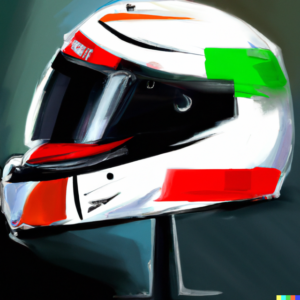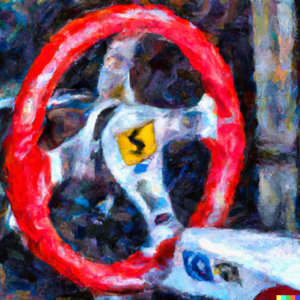F1 Helmet
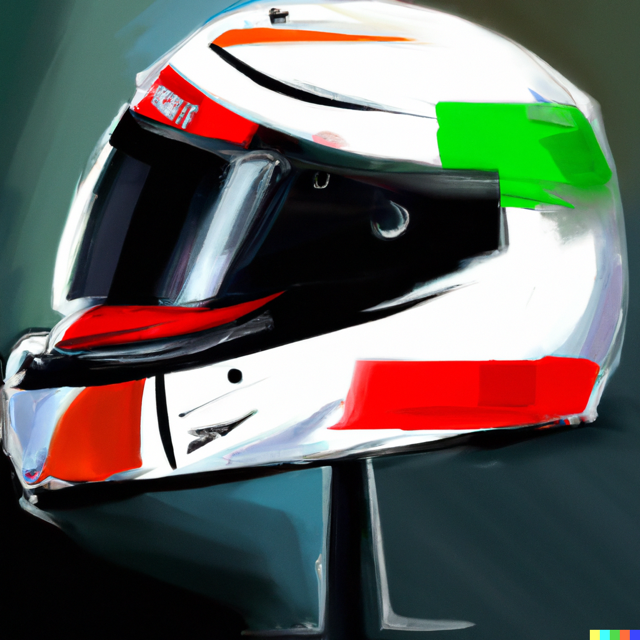
The Formula 1 helmet is a quintessential part of the sport. Not only does it protect drivers from impact during the race, but it also helps us distinguish Lewis Hamilton from his teammate George Russel.
Helmets are one of the most important aspects of a driver’s safety gear. They not only provide protection when contact with another wall or car occurs, but also protect the driver’s face from flying debris and insects.
Let’s dive into the world of Formula 1 helmets.
The History Of Formula 1 Helmets: What Are They Made Of?
When motor racing first started, drivers simply wrapped some cloth over their faces to keep annoying insects at bay and protect their faces from dirt debris kicked up by leading cars. In the 1920s, some drivers began to realize the value of helmets and switched to firefighter or football helmets instead of their usual cloth masks.
The governing body of Formula 1, the FIA, made cloth-covered cork helmets compulsory in 1952. These cork helmets were drenched in glue and left to dry to harden the helmet. By the end of the 1950s, metal helmets had entered the scene.
Glass Fiber Helmets
Glass fiber is much lighter and stronger than steel, making this material perfect for Formula 1 helmets. However, these open-faced helmets still forced drivers to make use of cloth and goggles to protect their faces.
The first full-faced look was debuted by Dan Gurney, who wore a full-face helmet to the German Grand Prix in 1958. This was a big change to the sport, with the new helmet offering more protection to drivers, as well as better aerodynamics.
Along with glass fiber helmets came the introduction of the visor, negating the need for drivers to wear goggles and cloth.
As positive as the introduction of this helmet was, it posed some new problems: drivers still had to communicate with their teams – and, even more importantly, the drivers needed to be protected from fire.
In 1961, the Grand Prix Drivers’ Association was established, and, along with the FIA, this Association aimed at improving safety for both drivers and spectators. As part of this move, the safety of the current helmet was closely inspected.
Fireproof inner layers were inserted, and an inbuilt air supply system was designed to become activated when the fire extinguisher in the car was activated. Another adjustment was the addition of a pipe from the driver’s fluid supply.
Finally, the radio system we know today was also included, which allows drivers to talk to their teams.
Carbon Fiber Helmets
Carbon fiber helmets were introduced in 2001. This material was much stronger than glass fiber and allowed each team to create a unique design for their helmets – meaning you could easily distinguish Mika Häkkinen and David Coulthard from McLaren by simply looking at their helmets.
Despite carbon fiber being heavier than glass fiber, the properties of this material meant that the load would be better distributed during a crash, offering better protection.
Today there are seventeen carbon fiber layers on the outside of a racing helmet. Inside the hard carbon fiber shell is a layer of foam – the purpose of this high-density foam is to absorb energy from an impact.
The last layer is soft foam, designed to conform to the driver’s face after the driver has had his face scanned by lasers.
Each driver usually has a primary and secondary helmet in stock, and new helmet designs are unveiled at the first Grand Prix of the season at the Bahrain International Circuit.
How Much Are F1 Helmets?
The cost of helmets varies between teams, but the latest season saw helmets costing around $4,000 each.
During the season, a driver will have more than a dozen helmets – sometimes as many as 15, meaning that the cost of a helmet per driver can be up to $60,000!
Can you buy a Formula 1 helmet?
Yes! You can be the proud owner of an F1 helmet (and other memorabilia) by purchasing raced-used helmets from the previous year, as well as replica and signed helmets from F1 Authentics.
How Strong Are Formula One Helmets?
New safety standards for Formula 1 helmets were introduced by the FIA in 2018 to improve the helmets’ strength.
These standards included compulsory requirements that teams had to meet, and helmets had to pass a stringent test called the FIA 8860-2018.
The FIA 8860-2018 had 14 standards/requirements that Formula 1 teams had to comply with to allow a helmet to be used during the season.
These requirements included impact tests, ballistic protection tests, crush tests, penetration tests, visor tests, testing the strength of the chin strap and chin guard, fireproof tests, surface friction tests and mechanical strength tests.
Once a helmet successfully passes this initial rigorous testing process, the FIA deems it safe to use for proper testing, and teams can start to work with the drivers to create a unique design for the helmet’s exterior.
Are F1 helmets bulletproof?
Part of the safety testing for helmets is ballistics testing. Metal projectiles are fired at the helmet, which can withstand a 7.9 oz projectile striking it at 155.3 miles per hour without losing its integrity.
So, in short, yes, these helmets are bulletproof.
What Is Inside An F1 Helmet?
Formula 1 helmets are some of the safest racing helmets in the world. Inside the hard carbon fiber shell is a layer of high-density foam and soft polystyrene foam that perfectly molds to the driver’s head.
FAQs
Are Formula One helmets fireproof?
Yes, Formula One helmets are fireproof, and must also be able to extinguish themselves. Drivers also wear fire-resistant balaclavas underneath the helmet for increased fire protection.
How heavy are Formula 1 helmets?
The latest models are light, weighing from 35 to 53 oz.
Why are there bumps on top of an F1 helmet?
Helmets are designed to be aerodynamic, and the bumps and little wings on the helmet allow it to channel air around the driver and engine in a more streamlined way.
Final Thoughts
It took a lot of time and money to create the perfect design, but today’s Formula 1 helmets are the best racing helmets in the world, protecting drivers from impact, G-forces and fires.

